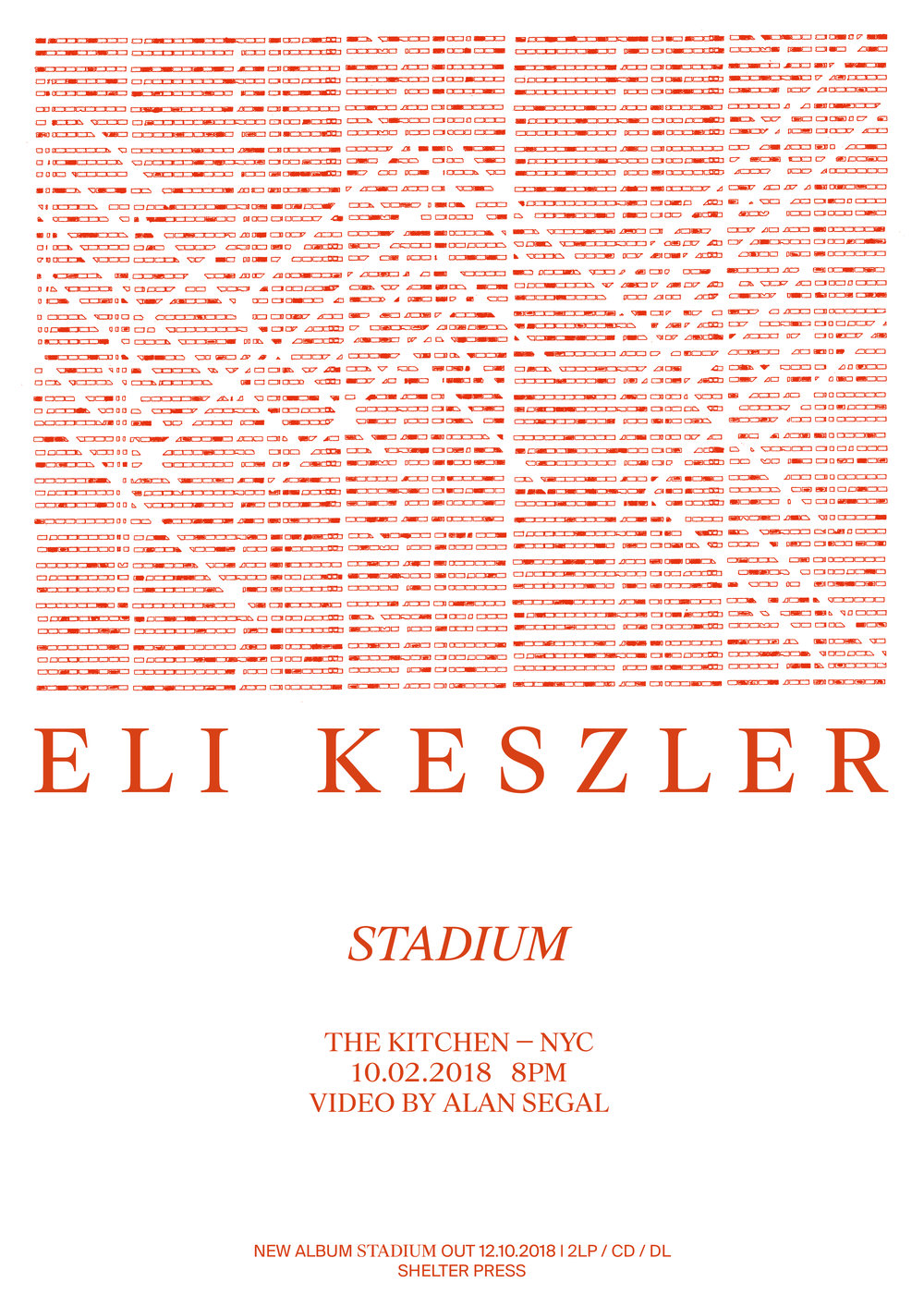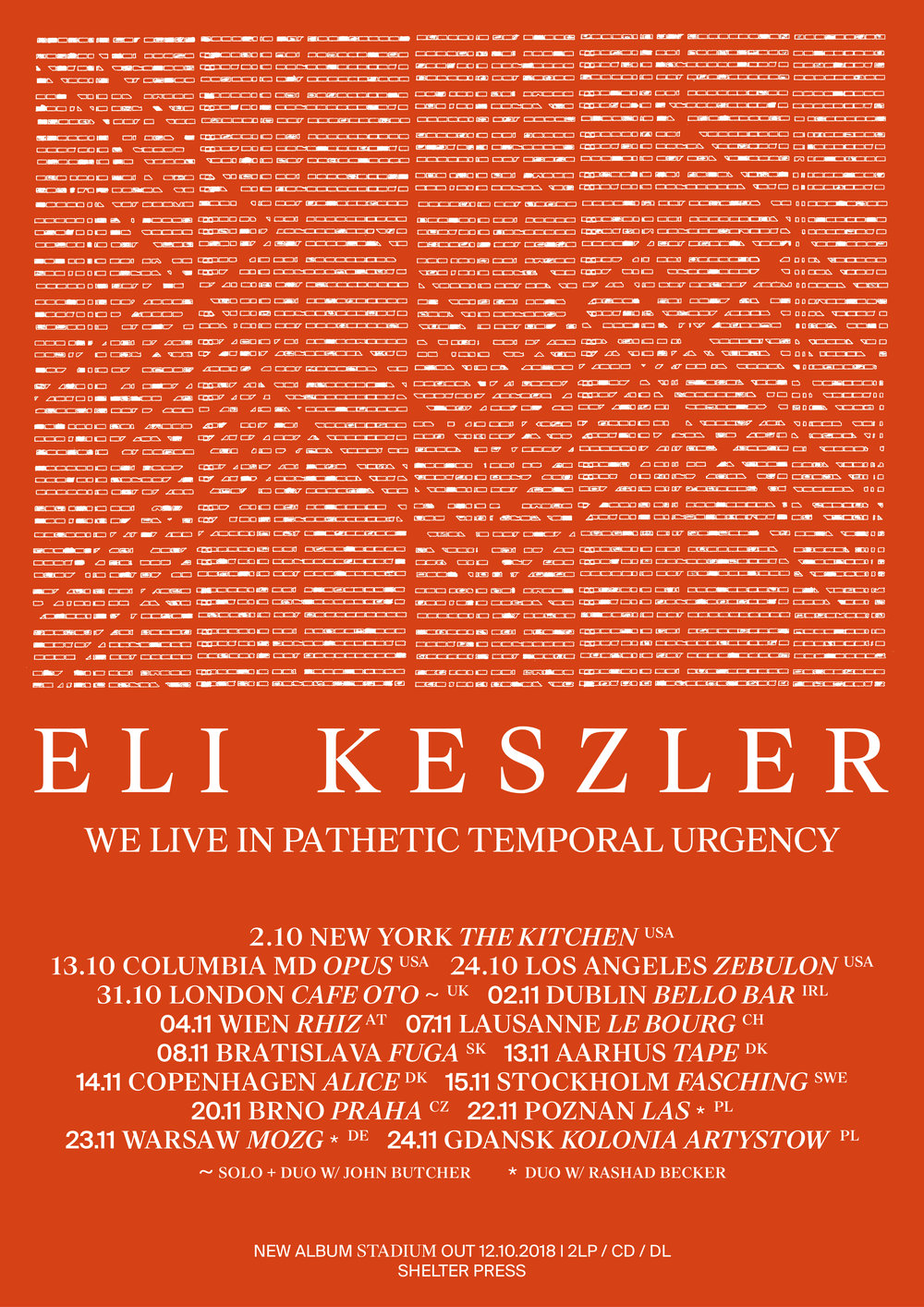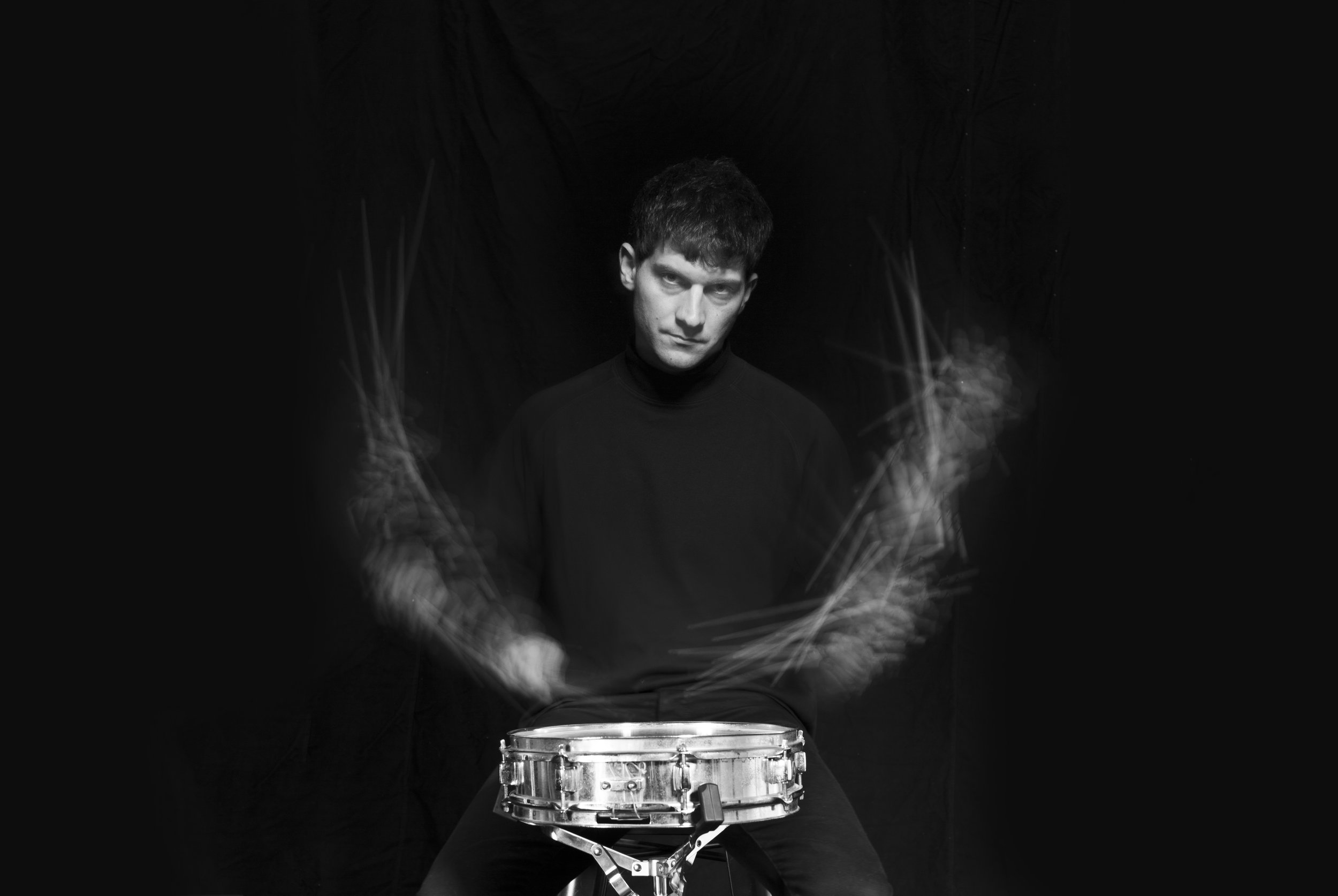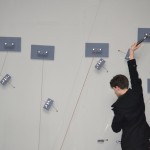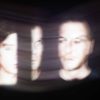Interview KARISA SENAVITIS
A kind of situational percussionist, Eli Keszler responds to acoustic spaces—everything from architectural venues to contemporary art museums—by altering our sense of time.
Consider his latest video, for instance; director Alan Segal calls it “a derivé, a walk, a random path from my temporary house in NY to Eli’s house. I was trying to feel imbued into Eli’s music—its relation with architecture and its weird quality of extreme focus and dispersion. The microscopical rhythmic texture of the tracks elicited a singular cognitive state, bringing a complex range of sync points between the sound and the city itself.”
“Lotus Awnings” is taken from Keszler’s ninth solo record, Stadium, which is due out on October 12th through Shelter Press. His instrument/installation for wandering/listening, Dead Interval, debuts as part of Columbia, Maryland’s OPUS programming the very next day.
We met in Tompkins Square Park during the preparations for both projects, which follow recent studio recordings with Oneohtrix Point Never, Oliver Coates, and Laurel Halo. A looming collaboration with author László Krasznahorkai is also in motion for the months ahead….
self-titled: The description for Dead Interval says piano wires connect to a circle of trees, with recorded voices transmitted through the wires and fragmented through speakers. Have you been to the Symphony Woods site?
I went a few weeks ago. It’s a public grounds with fairly tall trees—a very open space, not densely wooded or anything. I built a network of wires, connecting different trees together and running audio through the wires. So you’re going to hear resonated, distorted voices through the harmonics of the string. Amplified speakers will be dispersed throughout the space, so [the sound is] going to be quite present.
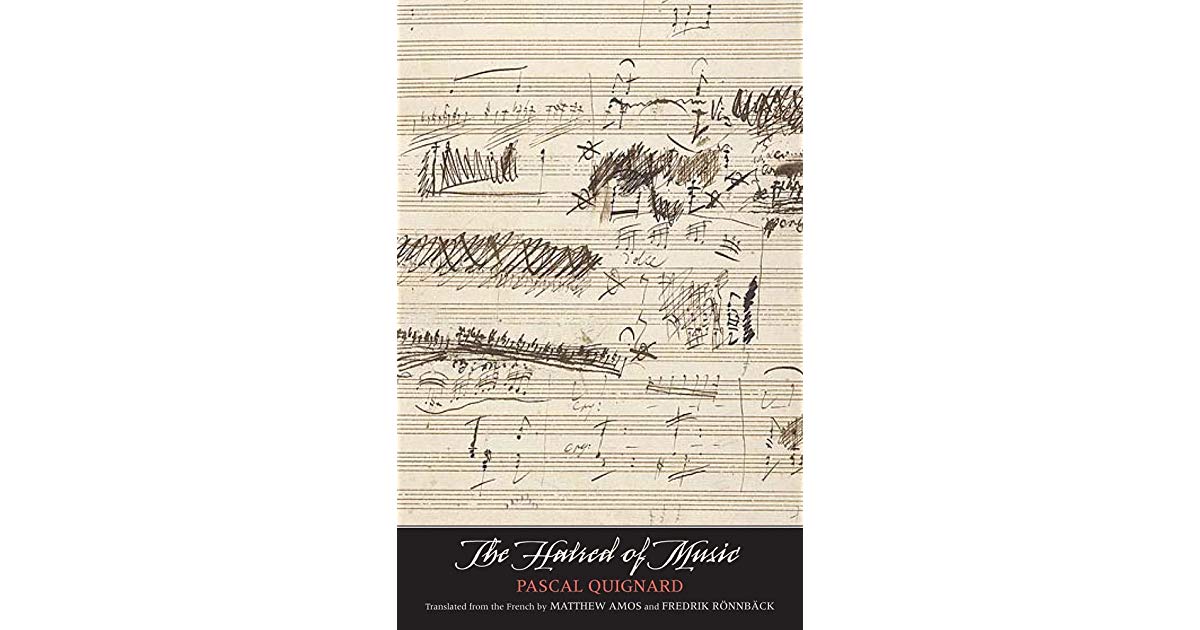
And the voices are reading a line from The Hatred of Music by Pascal Quignard: “For whom are you singing? Man is deaf.” It sounds like a fascinating book. Can you tell me about your connection to this text?
It’s an incredible book. It’s written by a French curator of Baroque and Renaissance music festivals. He’s kind of like a philosopher, and he’s written many books on ancient music and traditional European music. He stopped curating festivals and started to form this dislike of music.
The Hatred of Music is a series of short pieces about the relationship between violence and music, from the way instruments are crafted—out of a lot of pain, using animal parts—to how music is used for war. He has a lot of contempt for the contemporary world. I thought it was really interesting and beautifully written. Almost poetry. Each anecdote in it feels like it couldn’t be true, but then you look it up and there is historical precedent for all of these amazing stories of violence in music.
Are you coming to terms with the violence of your medium?
I think I’ve always thought music was pretty violent. I recognize that [Quignard’s] position—in a certain way—is very stodgy, and I see major problems in his thinking. But I think everything he’s saying has a grain of truth. So it’s something I’ve been reflecting on a lot. The text is not just about music; it’s about listening, and the ability to hear each other speak, to hear each other’s positions in the world. I found that super fascinating given everything that’s going on. Not as a cry of “please won’t you listen” as if I have something to say that other people don’t, but just generally that no one seems to be listening to each other and it’s causing complete chaos.
I’ve heard you love chaos.
I’ve been accused of that in the past. But how do you not love chaos? There are chaotic patterns everywhere. It’s very beautiful. But I think part of listening, actually, is finding order in that chaos; that challenge is fundamental. Like if you hear someone saying something that sounds out of control and insane and you have no way of relating to it…. If you create a wall, you’re not allowing anything in and have no way to develop.
With this piece, we’re sending fragments of text through the wire, connecting these trees in a this bucolic natural environment, and the sounds will be quite industrial. I’m hoping there will be this interesting kind of back and forth between the kind of metallic quality of what you’re hearing and the kind of wooded, natural, idyllic space.
Some of the lines are going to be 600 feet long, so it covers a lot of the grounds. One of the things that’s really nice about working with wire is you can really build out these spaces and encourage people to walk across vast terrains. I’m putting some wires almost at the highway. Because I love the idea of getting people to walk away from the festival and kind of go to the ends, which people probably wouldn’t do if there wasn’t some sort of guide.
Will it be a different kind of sonic experience at the edge of the grounds?
Yeah, definitely; there will be echoes from across. It’s going to be very different depending on where you are.
Do you see any connection or key differences between your project and the work of avant-composer Alvin Lucier?
Alvin Lucier is a hero. His work is amazing. But I think they’re really different. Lucier’s reduces music down to these very specific acoustic phenomena. Music on a Long Thin Wire, for instance, is about the relationship with electromagnetic fields and how they interact with wire. He does all types of experiments with the most reductive forms of musical content. And for me, my use of wire has more to do with the social. It’s about the distribution of sound. Like we were talking before about skating and how it uses places where design has failed and activates them in a different and unintended way. I want to get spaces used in ways they weren’t meant to be used and have encounters with sounds in places where they aren’t necessarily expected—to compress and expand music at the same time.
Can you speak to the name of your piece: Dead Interval?
The piece is built around this idea of the breakdown of listening across places or between people. I like the idea of these silences—like a dead interval, a deep empty space. The whole piece is looking at the breakdown of listening in a way. I keep coming back to how we’ve listened has changed so much.
How so? Do you have an example?
If you bought a piece of music from a store when I was a kid, it was because you heard something on the radio or just knew the band. And you would listen to it repeatedly even if you didn’t like it, because you couldn’t buy thousands of CDs. You’d buy one a month or something. So you’d listen to it repeatedly, and maybe over time, you’d actually learn to like it. Maybe it wasn’t the music; it was you. And that’s happened with so much music I didn’t like at first; over time, you learn to find all sorts of meaning and beauty in it. And alternatively, if you listen to something that you don’t like and you keep listening to it, you discover what’s wrong with it.
That’s a huge change in the way people listen to music. Now if people don’t like something, they never listen to it again. It’s just gone. I actually think that’s a huge loss. I think you can apply that same model to a lot of things that are happening; if you don’t like certain information, you switch the channel and have the automation of those channels being cultivated for your niche.
So to go back to the title of the piece, there are all of these communication gaps, these dead intervals. It’s these empty spaces where there has to be new ways of cultivating (listening to things we don’t like).
To make relate changes in music distribution and formats to our current political landscape is a pretty huge leap, but it really resonates with me.
This is a huge problem. I see this in myself too. I’m very skeptical of the way politics are used in art—especially in contemporary art. I think the role should be to question and propose things, and people need to feel like they can sort things out.
What other projects do you have on the horizon?
I’m doing a lot of shows with Oneohtrix Point Never and solo shows in Europe and Japan. I kind of oscillate between working in art spaces and music venues. And in the last couple of years, my two areas of working have merged in a really nice way, where I’ve been able to perform in a wide range of contexts.
Can you tell me about the your new record, Stadium?
I did an installation a couple years ago at the Carpenter Center, Harvard’s contemporary art space designed by Le Corbusier. I was working with James Hoff, a visual artist who I collaborate with quite a bit. We were looking for ways to mount speakers in the space. It’s an historic building, so there are really strict regulations. We were kind of struggling. Then I looked at the ceiling and saw these grates; I asked the building manager if they were speakers, because they kind of looked like a PA system. She said she didn’t know. So we did research and consulted a student that was doing a PhD on the building and it turns out there’s an unused sound system embedded in the building. It’s original. So we figured out where the wires terminated for the speakers in one of the administrative offices and cut a hole in the side. We took these old cloth-bound cables and connected them to an amplifier. We sent sound through it and it was a perfect 15-channel sound system, in stereo. So we did this whole piece using the speakers.
That was a real epiphany for me. Because for years, I’d been doing this work around architectural spaces and putting things in them and playing around with buildings in different ways but then this was actually discovering something inside the building and using that as basis for work.
When it came time to make this new record, I was interested in recording and discovering things inside of city spaces and different buildings. Throughout all the traveling that I did last year I collected this diary of recordings from lots of different spaces like the Boston City Hall boiler room—where I collected machine sounds—and these pachinko arcades in Tokyo. I built pieces around these landscape recordings; I laid out these beds of sounds and freely wrote music around it. I started to take these recordings that were quite long and squashing them, speeding them up to incredible speeds so they could be mapped to instruments. Then it became recordings of buildings layered and collaged over each other, so you have this smearing of spaces. And that’s the record. It’s using these different environments as ways of building really complex pieces of music.
I remember something the architect John Hejduk said about how architecture is a vessel for sound or something like that. That architects are designing for sound.
I think that’s true, and something I think a lot about. It so often is the last part that seems to be considered. And it’s really shameful. I think it can cause a lot of incredible psychological issues with people. They don’t realize they’re going crazy basically because a certain frequency is getting reinforced in a room and they’re hearing it over and over again and it’s like a direct line into their nervous system.
I’m very inspired and influenced by my surroundings, so it’s a very natural way for me to work to build site-specific pieces and music.
I took a long break from making records—like five years off—until streaming became ubiquitous and I saw people with ear buds using music as a way of navigating spaces. That was a huge change that got me interested. For a little while, it was a bit unclear what the role of recorded music was. And as soon as people were navigating the world through their headphones then I was like, ‘Ok, now I know what I’m recording music for; it’s for this. Walking is a huge part of my life; I spend a lot of my free time wandering. So much of the creative experience of making music takes place walking and thinking about what I’m working on.
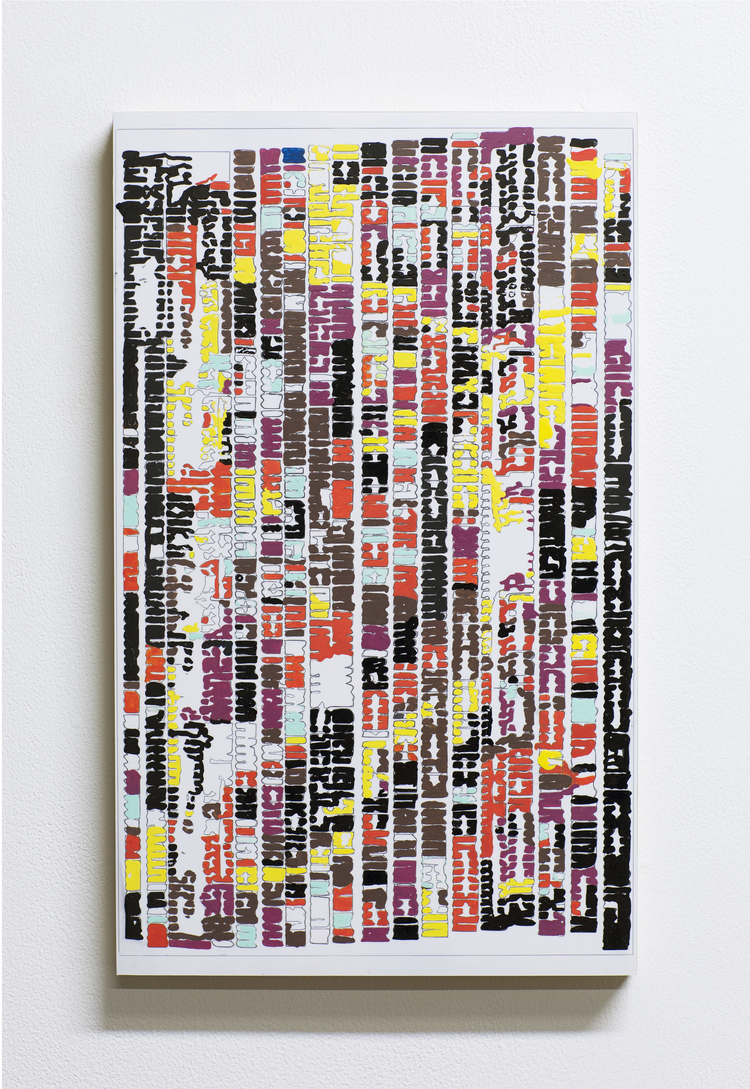
You’re also an artist in a graphic sense as well. Do you see your music as a kind of drawing?
I studied composition in school, and I got really into both writing scores and the process of notating my thoughts. The score writing led me to drawing, so when I had this idea to start working in spaces, it was pretty easy and quick for me to ask for a map of the space and then I’d start drawing on it. And the design, coming from a composer’s background, was a temporal process. So people are walking here and this happens or it’ll be this kind of space and then as it changes as people move…. You know what I mean?
Do you have a drawing for Dead Intervals?
Yeah I do; it’s very simple. The curators at Wilddogs made these beautiful maps of the site, where every single tree is documented. And I drew directly on it. It’s gorgeous and it was very useful for me to have a map of every tree.
Eli Keszler performs at a launch party for his new record tomorrow, at The Kitchen in New York City. Check out the official flyer for his fall tour below, along with further listening from his back catalogue.
